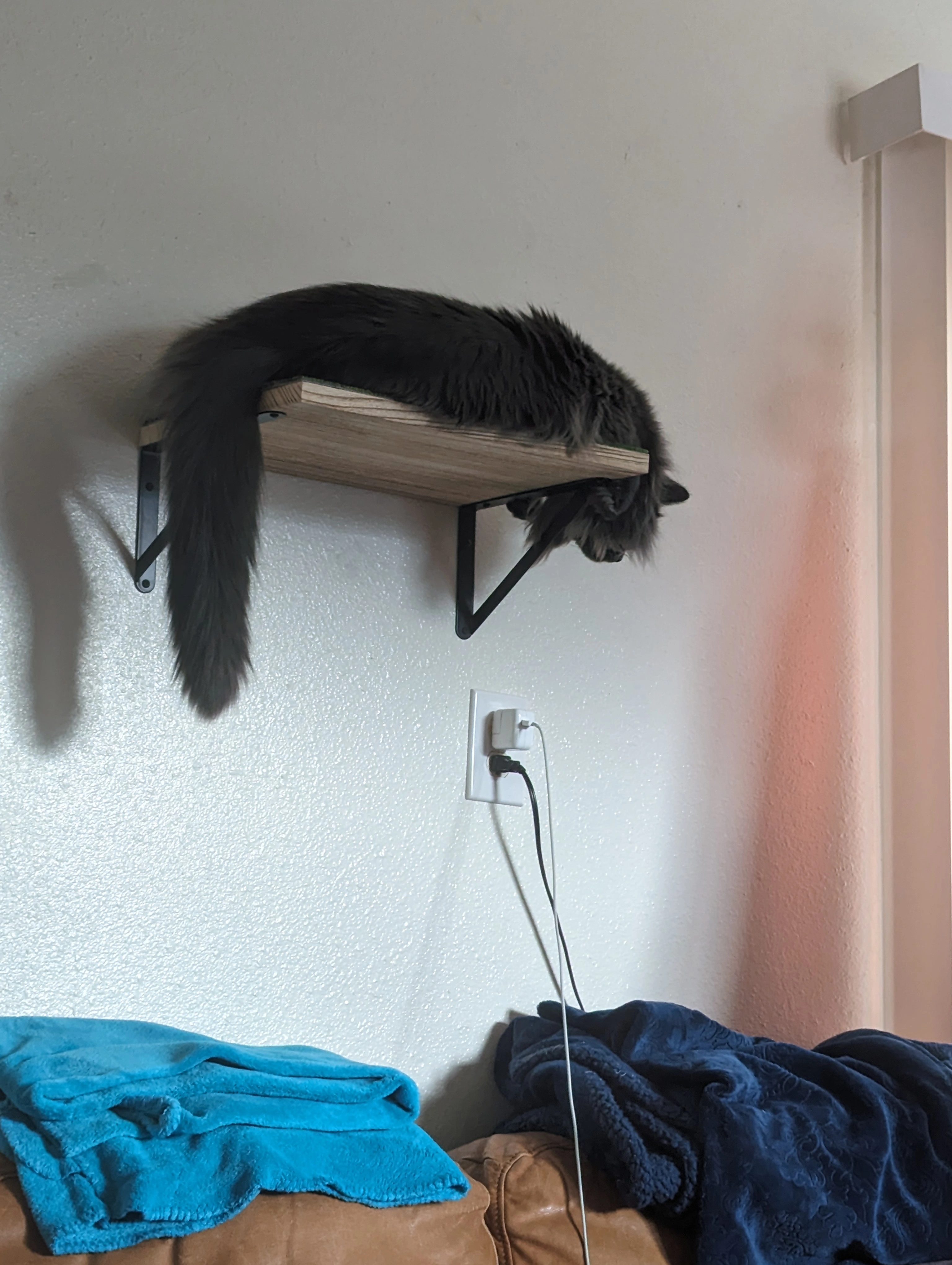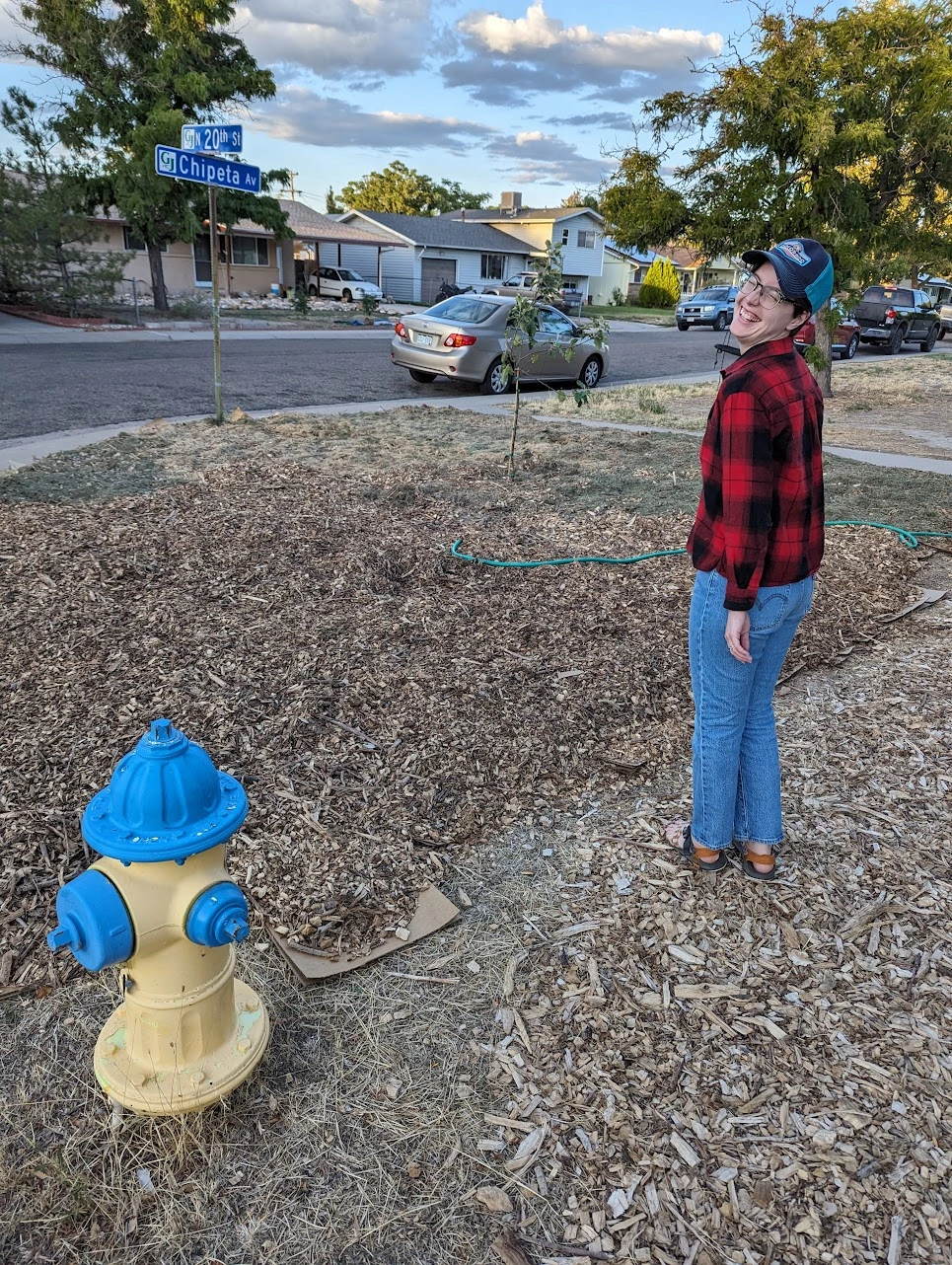hamtron5000
wandering library tech guy. me: anticapitalist, ecosocialist, fat, nerdy. interests: solarpunk, Buddhism, permaculture, everything.
- 4 Posts
- 16 Comments
oh dang, shutters! i forgot they’re not just decorative.
i might do something similar when we eventually replace everything in our house with electric stuff, but for now we have a gas-powered water heater. i am saving for a full solar installation on our roof, though, which would power everything. solar is the one energy-producer we have here in absolutely wild abundance.
that’s where i saw that video! appreciated.
i’d love to move, but i want to improve where i am while i’m here. we have some plans for trees and sunflowers or amaranth on that side, but i think it’s a “both/and” situation rather than an “either/or” for me.
yes, that actually is my very long term strategy, but the trees are not in place yet. my wife and i had a permaculture analyst suggest plants that produce edible foods for our area, so there are some plans for that and maybe also sunflowers or amaranth to do a natural block. but for today, i’m thinking awnings.
yeah, i’m thinking (tentatively) about trying to get some non-plastic, manually retractable cloth ones. then i can leave them fully extended for the hot-as-balls summer and dial them back for other seasons.
i wanted awning before that video, but that video made me start pricing out my options! ha.
DIY book scanner project part 6, “Distribution”, might have a few leads on how to do this. https://annas-blog.org/blog-how-to-become-a-pirate-archivist.html
dang, cloth diapering is no joke. good for you!
To answer my own question, a couple things. Today my wife and I mounted two cat shelves to give our boys a way to get to a high and inaccessible place - my wife got a couple of carpet squares from her workplace and glued them onto two shelves, which we mounted today.

i also recently built a really basic compost bin. baby steps, right?
answering my own question, i’m snagging a couple of old mountain bikes from a coworker and her husband who don’t use them. going to fix them up a bit for myself and my wife, maybe make mine into a low-end bikepacking rig. i like that idea; we’ll see how much stuff i can use from my own boneyard and what, if anything, i’ll have to buy. good times.
to answer my own question, i’m installing some rainwater catchment barrels at my house hopefully this week. all but one (we have four) were sourced from local folks. once these are installed, i have purchased a zero-pressure drip irrigation system and am going to try to have that installed before the first big frost, usually about two or three weeks from now where i live. there won’t be any water in it this season, but it will be ready to go in the spring - or so i hope!
lol, absolutely! it’s a combination of this method (deep mulching, the Ruth Stoat method) and this method (lasagna mulching or lasagna composting).
what we’re doing is laying down a double layer of cardboard, topping it with 3+ inches of wood chips, adding nitrogen in the form of grass clippings and, later in the year, leaves; and adding some manure, then seeding that mix with cover crops.
on the other side of our yard, we’re going to do a more traditional lasagna method because we’re running low on wood chips. this will be cardboard, an inch of woodchips, manure, and nitrogen. this will also be seeded.
in the spring, when our cover crops have bloomed, we’ll chop and drop them where they are, adding more organic material to the soil we’re building. finally, in that mixture, we’ll plant the native wildflowers and food crops we’re interested in growing and harvesting.
 i’ve posted about this before, but here’s our current progress on deep lasagna mulching our front yard. we just had an apple tree put in, and i have seeded the grass clipping-covered area of this part of our yard with cover crops. laughing wife for scale.
i’ve posted about this before, but here’s our current progress on deep lasagna mulching our front yard. we just had an apple tree put in, and i have seeded the grass clipping-covered area of this part of our yard with cover crops. laughing wife for scale.


dang, approximately where in GJ? that’s where i’m located and i’d love to get some inspiration. i see some stuff like that in Fruita sometimes.